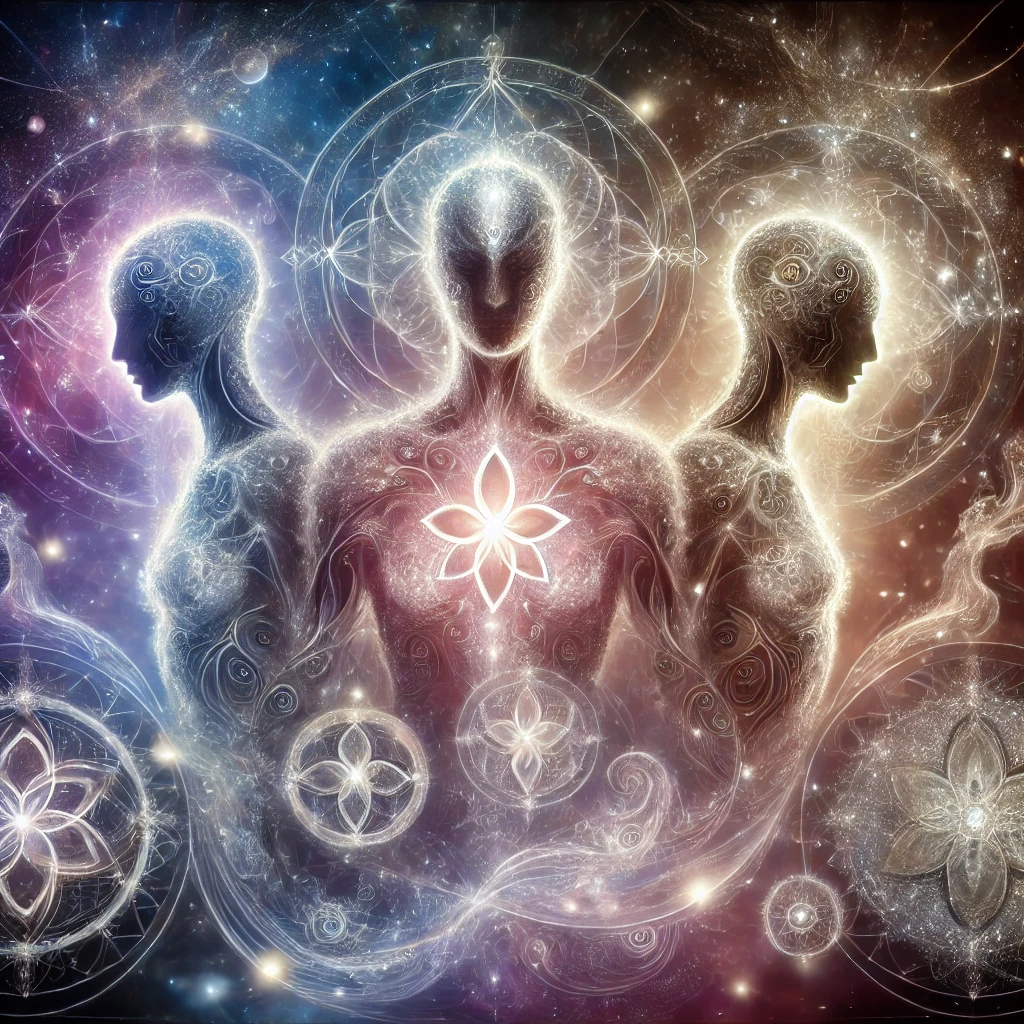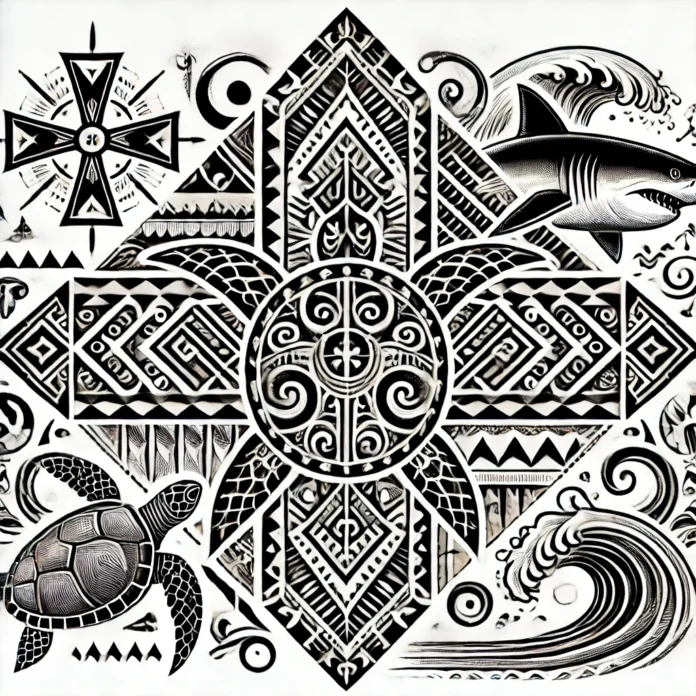Polynesian tattoos carry a deep cultural significance, each design intricately woven with meaning and stories. My own tattoo features sea turtles swimming gracefully across my wrist, a nod to the rich Hawaiian culture that celebrates nature and family connections. In Hawai’i, the kupuna—respected elderly—are believed to die but remain present as spirits on earth, often taking the form of an animal to stay connected to their families. This idea of aumakua, or protective family deity, is central to Hawaiian traditions and symbolizes ongoing guidance and presence, even in the afterlife.
Different animals carry unique meanings. Mano (sharks) represent strength, power, and protection, holding a sacred place in Hawaiian beliefs. Meanwhile, honu (turtles) symbolize endurance, health, long life, good luck, prosperity, and unity. These ancient navigators have even been tied to the legend that they helped the Polynesians discover the Hawaiian Islands thousands of years ago. Their natural sense of direction—returning to the exact beach where they once laid their eggs after roaming the vast ocean—is a quality I deeply admire. This was one reason I chose this design, as it reminds me of the value of guidance and trusting one’s intuition.
When I leave Hawai’i, I often feel homesick and sad, but my tattoo serves as a personal reminder of home. The turtles represent my ability to always find my way back, both physically and spiritually. For the Polynesian indigenous people of Oceania, including the Marquesans, Samoans, Niueans, Tongans, Cook Islanders, Hawaiians, Tahitians, and Maori, tattoos are more than art—they are expressions of traits, language, culture, and beliefs.
Polynesian traditions are tied to the Malayo-Polynesian language group, which is a subgroup of the Austronesian family. This group is divided into western, central, and eastern branches and includes countries in southeast Asia, such as the Philippines, Japan, Taiwan, and Indonesia. The Eastern Malayo-Polynesian branch, encompassing Melanesia, Micronesia, and Polynesia, is where this rich tattooing heritage thrives.
Tattoos and Their Connection to Life and Spirituality
In Polynesian culture, tattoos go beyond decoration; they represent the characteristics of the person wearing them, such as their personality, identity, status in society, genealogy, and life story. The process of getting tattooed was often incredibly painful, as it involved traditional methods that were seen as a rite of passage for many men. Refusing to be tattooed or declining to finish due to the pain brought disgrace and could even result in being hated by one’s tribe.
The meaning of a tattoo also changes based on its placement on the body. In Polynesian beliefs, humans are considered the children of heaven (Rangi) and Earth (Papa), with a legend describing their union as man’s ultimate quest. The connection between Rangi and Papa is reflected in the location of tattoos: designs on the upper body signify spirituality and the connection to heaven, while tattoos on the lower body represent life on earth and the physical world. The direction and relation of the tattoos in space further deepen their meaning, embodying the complex interplay between the spiritual and earthly realms.
Body Parts:
Head:
In Polynesian culture, the head is the contact point to Rangi (heaven), making tattoos here symbolic of spirituality, knowledge, wisdom, and intuition. These designs highlight a strong connection to the spiritual realm.
Chest:
The chest and high trunk area symbolize the space between Rangi and Papa (Earth), focusing on generosity, sincerity, honor, and reconciliation. This area represents the balance necessary for harmony between spiritual and earthly realms.
Lower Trunk/ Core:
The lower trunk and core reflect life energy, courage, procreation, and independence. Thigh tattoos symbolize strength and marriage, while the stomach or navel tattoos connect to one’s mana and independence, often tied to the symbolic act of cutting the umbilical cord. In Polynesian tradition, independence is a highly valued trait.
Upper and Lower Arm/ Shoulder:
On the upper arm and shoulder, tattoos represent strength, bravery, and the identity of warriors and chiefs. Tattoos on the lower arms and hands symbolize creativity, creation, and the art of making things, reflecting the practical and artistic contributions of the wearer.
Polynesian Tattoos and Their Meanings:
The Power of Shark Teeth
Shark teeth, or niho mano, hold immense significance in Polynesian culture. Sharks are considered highly sacred and symbolize strength, protection, and guidance. They also embody ferocity and adaptability, qualities that highlight survival and resilience in challenging environments. For the Polynesian people, these symbols reflect a deep connection to the ocean and its powerful creatures, blending reverence with the traits they aspire to embody in their own lives.
The Significance of the Tiki
The Tiki are human-like figures regarded as semi-gods, often linked to ancestors, chiefs, or priests who became semi-gods after death. They serve as guardians, symbolizing protection and fertility, playing a central role in Polynesian culture. One of the most important qualities of the Tiki is their eyes, which are often depicted as bigger than other facial characteristics, emphasizing their watchful and protective nature. These figures stand as enduring symbols of reverence and connection to the divine.
The Mystical Power of Lizards
In Hawaiian culture, lizards, or mo’o, are seen as powerful creatures that embody both good luck and bad luck. They possess the unique ability to communicate between humans and gods, offering access to the invisible world. However, lizards also serve as warnings; they can bring death and bad omens to those who are disrespectful. These creatures represent the delicate balance between fortune and misfortune, playing a vital role in the Polynesian worldview.
The Symbolism of Stingrays
Stingrays are revered in Polynesian culture for their qualities of adaptation, gracefulness, and peacefulness. However, they also represent danger, agility, speed, and stealth, showcasing a balance between serenity and the ability to defend oneself when needed. Their remarkable ability to blend in with their surroundings and hide in the sand from predators makes them a powerful symbol of protection. The stingrays’ quiet strength and survival skills are admired for their subtle yet effective presence in the natural world.
The Significance of Ocean and Wave Designs
The ocean holds immense respect in Polynesian culture as it is the source of life and the main source of food for the people. Polynesians have a deep understanding of how to take care of the ocean, respecting the balance of taking and giving to this vital resource. The ocean is also considered a place of rest when one departs on their last voyage, symbolizing the passage to death and beyond.
Wave designs in tattoos represent life, change, and continuity through the cycles of existence, embodying the flow of life and death. Waves also symbolize the place beyond death, where the departed go to rest, reflecting the seamless connection between life, death, and the eternal journey beyond.
The Symbolism of the Sun
In Polynesian culture, the sun symbolizes riches, brilliance, grandness, and leadership. Its periodic rising is considered a representation of eternity and a sign of rebirth, reflecting the endless cycle of life, renewal, and the power of transformation. The sun’s importance goes beyond just its physical presence, acting as a guide and symbol of strength for the Polynesian people.
The Symbolism of Enata

Enata are human figures found in Polynesian tattoos that represent men, women, and gods. The term originates from the Marquesan language. Depending on their placement and the space around them, enata symbolizes life experiences, birth, rank in society, relationships, actions, and stories. When incorporated into a bigger tattoo, they can represent people and their relations. For instance, a row of enatas arranged in a semi-circle often symbolizes the sky and the ancestors who guard their descendants on earth. A reverse enata signifies an enemy, representing the opposing forces in the universe.
The Marquesan Cross
The Marquesan Cross symbolizes the balance between all the elements and the importance of maintaining universal harmony. This symbol embodies the Polynesian belief in the interconnectedness of nature and the need for equilibrium in life. Through this representation, it serves as a reminder of the constant need for balance in every aspect of existence.
Conclusion
Polynesian tattoos carry deep symbolism, reflecting the rich culture and beliefs of the Polynesian people. From animals like sharks and turtles to powerful symbols such as the Tiki and Marquesan Cross, each tattoo tells a unique story. These designs are not just decorations but represent connections to ancestors, the natural world, and spiritual guidance. Whether it’s the ocean waves symbolizing life’s flow or the sun’s eternal rise, Polynesian tattoos serve as lasting markers of heritage, identity, and respect for the balance of life.
FAQs
What do Polynesian tattoos symbolize?
Polynesian tattoos symbolize various aspects of life, such as spirituality, strength, family, protection, ancestry, and the connection to nature. Each design carries specific meanings tied to personal identity, status, and cultural heritage.
Why is tattooing considered sacred in Polynesia?
Tattooing is sacred in Polynesia because it is seen as a rite of passage, a way to honor ancestors, and a method of connecting with spiritual beliefs. Tattoos represent important life experiences and are deeply tied to cultural identity and protection.
What are the 5 main Polynesian tattoo styles?
The five main Polynesian tattoo styles are:
- Tahitian
- Samoan
- Maori
- Hawaiian
- Marquesan
Each style has its own distinctive patterns, meanings, and symbolism tied to the culture it originates from.
What is the difference between Hawaiian and Polynesian tattoos?
Hawaiian tattoos are a subset of Polynesian tattoos, with their own unique designs, often featuring symbols of nature and ancestral connections, such as sea turtles or sharks. Polynesian tattoos, in general, encompass a broader range of styles and symbolism, spanning across various islands and cultures within the Polynesian triangle.
